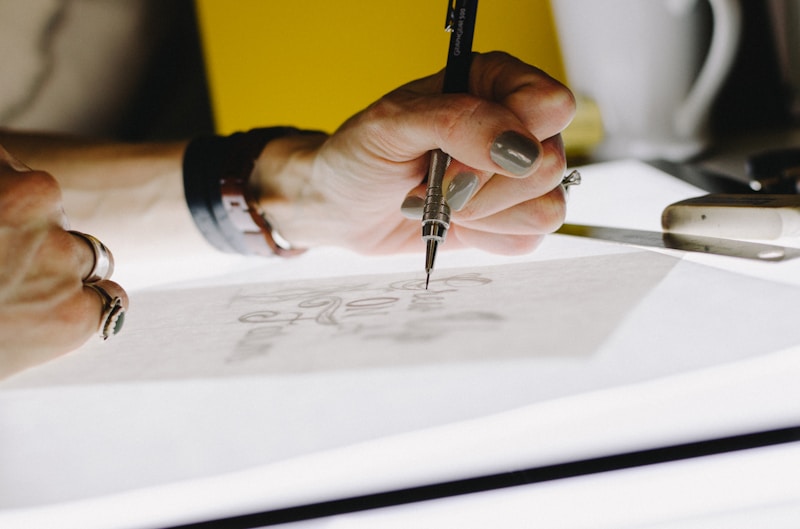Unlocking the Aesthetic: Classic Color Palettes for Timeless Design
Introduction to Classic Color Palettes
In the vast ocean of design, one element consistently reigns supreme—color. The right color palette can breathe life into any project, guiding emotions and conveying messages that words alone often fail to communicate. Today, we delve into the mesmerizing world of Classic Color Palettes, exploring their historical significance, emotional impact, and practical applications in contemporary design.
The Historical Significance of Classic Color Palettes
Color has played a pivotal role in art and design throughout history. From the vibrant hues of ancient pottery to the subdued tones of Renaissance paintings, classic color palettes have evolved through various cultural epochs. For instance, the traditional grouping of reds, greens, and golds in Eastern art symbolizes not just beauty but also prosperity and good fortune.
Understanding these classic palettes can provide a deeper insight into the intentions behind artistic and design choices, allowing contemporary creators to make informed decisions in their work.
Understanding Color Theory
Before diving into specific palettes, it’s essential to grasp the core principles of color theory. At its heart, this theory revolves around the color wheel, which categorizes colors into primary, secondary, and tertiary colors. These relationships guide us in creating harmonious color combinations.
Creating Harmonious Combinations
Using the color wheel, designers can select complementary, analogous, or triadic color schemes. For example, complementary colors such as blue and orange offer high contrast and visual interest, while analogous colors like green, blue, and teal create a serene and cohesive look.
| Color Relationships | Examples | Emotional Impact |
| Complementary | Red & Green | Excitement, Energy |
| Analogous | Blue, Teal, Green | Calm, Harmony |
| Triadic | Red, Yellow, Blue | Balance, Vibrancy |
Popular Classic Color Palettes and Their Applications
Now, let’s examine some iconic classic color palettes and how they can enhance various design projects.
1. The Timeless Monochrome
Monochrome palettes utilize varying shades and tones of a single color. This approach allows for a sophisticated, elegant style that can be effectively applied in both fashion and interior design. For example, incorporating different shades of gray in a living room can create a calming atmosphere while still allowing for personality through texture.
2. Earthy Neutrals
Earthy tones such as browns, tans, and greens evoke a sense of comfort and connection to nature. This palette is particularly popular in sustainable design, where the aim is to create spaces that feel organic and warm. Consider using earthy neutrals in a home environment to foster peace and relaxation.
3. Classic Blue and White
The combination of classic blue and white is a hallmark of traditional designs, particularly within coastal themes. The refreshing feel of blue, often associated with water, pairs beautifully with crisp white, symbolizing cleanliness and simplicity. This palette is perfect for beach houses and summer celebrity retreats.

4. Bold and Bright Primary Colors
Using red, yellow, and blue can bring vitality and energy to a space. This classic palette is highly effective for children’s rooms and playful environments. Its vibrancy stimulates creativity and joy, making it an excellent choice for educators and child-centric businesses.
The Emotional Impact of Color Palettes
Color is a powerful communicator. Each color evokes a different emotional response; thus, when designing using classic color palettes, consider the feelings you aim to evoke.
Color Psychology
Color psychology is the study of how colors influence perceptions and behaviors. For example, blue induces feelings of calmness; red promotes excitement and urgency. Understanding these principles will allow designers to tailor their work to align with the desired emotional responses from audiences.
Practical Applications of Classic Color Palettes
Let’s explore where and how these classic palettes can be applied effectively across various fields.
In Interior Design
Classic color palettes significantly influence interior spaces, enhancing the ambiance and emotional impact of rooms. A monochromatic scheme can create a seamless professional environment, while earthy colors can add warmth to residential settings.
In Fashion
Fashion designers often draw inspiration from classic color palettes, enabling them to create collections that feel both timeless and current. Colors can signify trends, provoke emotion, and even define entire seasons in the fashion calendar.
In Branding
Brands use color strategically to evoke specific feelings from consumers. Classic palettes such as blue and white signify trust and dependability, often employed by financial institutions and healthcare providers.
Choosing the Right Color Palette for Your Project
When selecting a color palette for your next design initiative, consider the following:
- Project Purpose: What is the primary goal of your design?
- Target Audience: Who are you designing for, and what emotional response do you want to evoke?
- Current Trends: While classic palettes are timeless, integrating current color trends can elevate your design.
Conclusion and Final Thoughts
Classic color palettes provide an array of options, each with its own historical significance and emotional impact. When carefully selected and thoughtfully implemented, these palettes can transform any project from ordinary to extraordinary.
As you embark on your next design journey, consider the timeless power of classic color palettes. Remember, the essence of effective design is not merely in the colors themselves but in how these colors collaborate to tell a compelling story. Always keep your audience in mind, and ensure your color choices align with the emotions you wish to evoke.